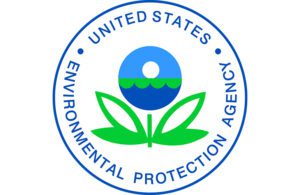 Commercial sterilization facilities will have two to three years to comply with a new ethylene oxide (also referred to as EtO or EO) sterilization emission rule announced by the EPA today.
Commercial sterilization facilities will have two to three years to comply with a new ethylene oxide (also referred to as EtO or EO) sterilization emission rule announced by the EPA today.
However, the EPA said it will not require commercial sterilizers to use lower concentrations of EtO or to limit the use of packaging and pallet material, citing industry feedback.
Addressing the potential for medical device shortages if sterilizers are unable or unwilling to comply, the agency’s final rule also includes presidential authority for two-year exemptions for stationary sterilizers if the commander-in-chief “determines that the technology to implement such standard is not available and that it is in the national security interests of the United States to do so.”
The EPA’s previous proposal would have only allowed 18 months for compliance.
The EPA said the new EtO sterilization limits and air pollution control requirements will reduce emissions from commercial sterilizers by more than 90%. The rule covers almost 90 commercial sterilization facilities in the U.S. that are owned and operated by around 50 companies.
The FDA, commercial sterilizers and medical device manufacturers have already been working on EtO alternatives and emission reductions to lessen the health risks to workers and communities from emissions of the toxic gas.
This year, the FDA’s sterilization innovation partnership with device manufacturers and commercial sterilizers led to the addition of vaporized hydrogen peroxide (VHP) as an Established Category A sterilization method for medical devices.
Related: Taking medical device sterilization in-house with vaporized hydrogen peroxide (VHP)
But an estimated half of all medical devices — or about 20 billion devices each year — are sterilized with EtO, including many medical devices that can only be sterilized with EtO.
The EPA’s new EtO sterilization rules
The EPA said it is strengthening the National Emission Standards for Hazardous Air Pollutants (NESHAP) “based on our updated understanding of risk from EtO exposure, as well as available technologies to control emissions” to reduce the lifetime cancer risk for commercial sterilization plant workers and neighbors.
The rule requires continuous emissions monitoring and quarterly reporting for most commercial sterilizers. The rule also establishes standards for building leaks and chamber exhaust vents, which were previously unregulated, while toughening standards for vents in sterilization chambers and aeration rooms.
Sterilization facilities that use more than 60 tons of EtO per year — that’s 28 facilities in the U.S. — are considered the highest risk and will have two years to comply with the rules. Lower risk facilities will have more time: facilities that use less than 1 ton per year (21 facilities) will have three years, while facilities that use 1 to 60 tons per year (39 facilities) will have two to three years.
All facilities will will have an additional 180 days to demonstrate compliance, and some are eligible for one-year extensions under the Clean Air Act.
“EPA’s own experience working with facility owners, as well as state and local agencies that have regulated EtO emissions from these facilities, confirms that it is feasible for individual facilities to install the required controls within the deadlines provided in this rule,” the agency said. “This rule offers cost-effective compliance options and mitigates and manages any potential risks to the supply chain. It ensures that these standards reduce cancer risks for communities exposed to EtO emissions.”
The EPA estimates the capital costs of the final rule are $313 million, yielding an annual reduction of approximately 21 tons.
Additional outdoor emission regulations by the EPA are expected in the coming weeks for chemical plants that make, store or use EtO. And the EPA said its Office of Pesticide Programs (OPP) is “working on a comprehensive set of new mitigation measures for workers who use EtO to sterilize products and for other people in communities near sterilization facilities.”
Previously: EPA flags high-cancer-risk EtO sterilization facilities across the country